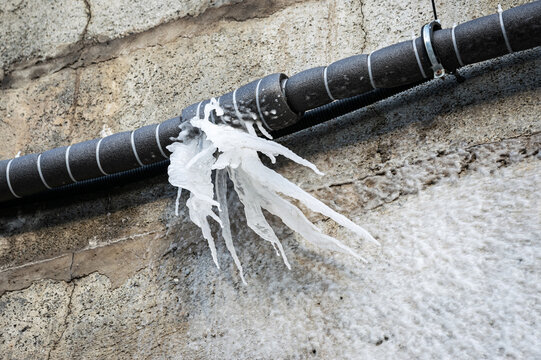Ways to Maintain Your Pipes from Cold Weather Issues: Important Guidance
Ways to Maintain Your Pipes from Cold Weather Issues: Important Guidance
Blog Article
How do you actually feel about Prevent Frozen Pipes ?

Cold weather can damage your plumbing, specifically by freezing pipelines. Below's exactly how to prevent it from occurring and what to do if it does.
Introduction
As temperature levels decrease, the danger of frozen pipes increases, potentially leading to expensive repair work and water damages. Understanding exactly how to stop frozen pipes is crucial for homeowners in chilly environments.
Prevention Tips
Insulating vulnerable pipes
Wrap pipelines in insulation sleeves or utilize warmth tape to protect them from freezing temperatures. Concentrate on pipes in unheated or outside areas of the home.
Heating strategies
Maintain indoor rooms sufficiently heated, specifically locations with pipes. Open cabinet doors to enable warm air to circulate around pipelines under sinks.
Just how to identify icy pipelines
Look for decreased water circulation from taps, unusual odors or noises from pipes, and visible frost on revealed pipelines.
Long-Term Solutions
Structural adjustments
Consider rerouting pipes far from outside walls or unheated areas. Add added insulation to attics, basements, and crawl spaces.
Updating insulation
Buy high-grade insulation for pipes, attics, and walls. Correct insulation aids maintain constant temperature levels and minimizes the risk of frozen pipelines.
Safeguarding Outdoor Plumbing
Yard hoses and exterior taps
Detach and drain pipes garden hose pipes before winter season. Set up frost-proof faucets or cover exterior taps with protected caps.
Comprehending Frozen Pipes
What causes pipes to ice up?
Pipelines freeze when subjected to temperature levels below 32 ° F (0 ° C) for extended durations. As water inside the pipes freezes, it increases, putting pressure on the pipe walls and potentially triggering them to rupture.
Threats and problems
Icy pipes can result in water system disruptions, property damages, and costly repair work. Burst pipelines can flooding homes and create extensive structural damages.
Indications of Frozen Piping
Identifying icy pipes early can prevent them from breaking.
What to Do If Your Pipes Freeze
Immediate actions to take
If you believe icy pipes, maintain faucets open to relieve pressure as the ice melts. Make use of a hairdryer or towels soaked in warm water to thaw pipelines gradually.
Verdict
Avoiding frozen pipelines needs positive actions and quick feedbacks. By recognizing the causes, indications, and preventive measures, homeowners can safeguard their pipes throughout cold weather.
5 Ways to Prevent Frozen Pipes
Drain Outdoor Faucets and Disconnect Hoses
First, close the shut-off valve that controls the flow of water in the pipe to your outdoor faucet. Then, head outside to disconnect and drain your hose and open the outdoor faucet to allow the water to completely drain out of the line. Turn off the faucet when done. Finally, head back to the shut-off valve and drain the remaining water inside the pipe into a bucket or container. Additionally, if you have a home irrigation system, you should consider hiring an expert to clear the system of water each year.
Insulate Pipes
One of the best and most cost-effective methods for preventing frozen water pipes is to wrap your pipes with insulation. This is especially important for areas in your home that aren’t exposed to heat, such as an attic. We suggest using foam sleeves, which can typically be found at your local hardware store.
Keep Heat Running at 65
Your pipes are located inside your walls, and the temperature there is much colder than the rest of the house. To prevent your pipes from freezing, The Insurance Information Institute suggests that you keep your home heated to at least 65 degrees, even when traveling. You may want to invest in smart devices that can keep an eye on the temperature in your home while you’re away.
Leave Water Dripping
Moving water — even a small trickle — can prevent ice from forming inside your pipes. When freezing temps are imminent, start a drip of water from all faucets that serve exposed pipes. Leaving a few faucets running will also help relieve pressure inside the pipes and help prevent a rupture if the water inside freezes.
Open Cupboard Doors
Warm your kitchen and bathroom pipes by opening cupboards and vanities. You should also leave your interior doors ajar to help warm air circulate evenly throughout your home.

I am very excited about Winter Plumbing Precautions: Preventing Frozen Pipes and I'm hoping you enjoyed my blog posting. Do you know about another person who is sincerely interested in the niche? Do not hesitate to share it. Bless you for being here. Kindly visit our blog back soon.
Call Today Report this page